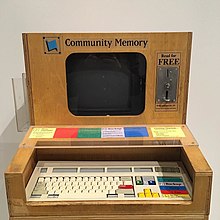Community network
This form uses display ads and informational postings from fee-paying business and organization members to generate revenue critical to the support of professional journalists producing news for the community.
The most extensive array of information services in a community network includes news from professional and amateur reporters, news and information from businesses and organizations; community events listings; weather forecasts; listings of governmental offices, businesses and organizations; and galleries of images of the place.
The primary goals of a community network may include providing a sustainable, trusted platform for an urban neighborhood, suburban village or exurban town or region to enhance a vital community and functioning democracy; closing of the digital divide across socio-economic lines; offering easier access to already existing information and services; promotion of local economic development and employment; strengthening of local identity; and/or revitalization, promotion, and/or maintenance of local communal ties.
The area identified with a community network could be a town, city, county, metropolitan neighborhood, state, and occasionally a region.
Though Community Memory existed in Berkeley, California in the 1970s and private bulletin board systems that welcomed the general public flourished during the late 1970s through the early 1990s, "community networking" as an intentional goal became popular in the late 1980s and early 1990s.
